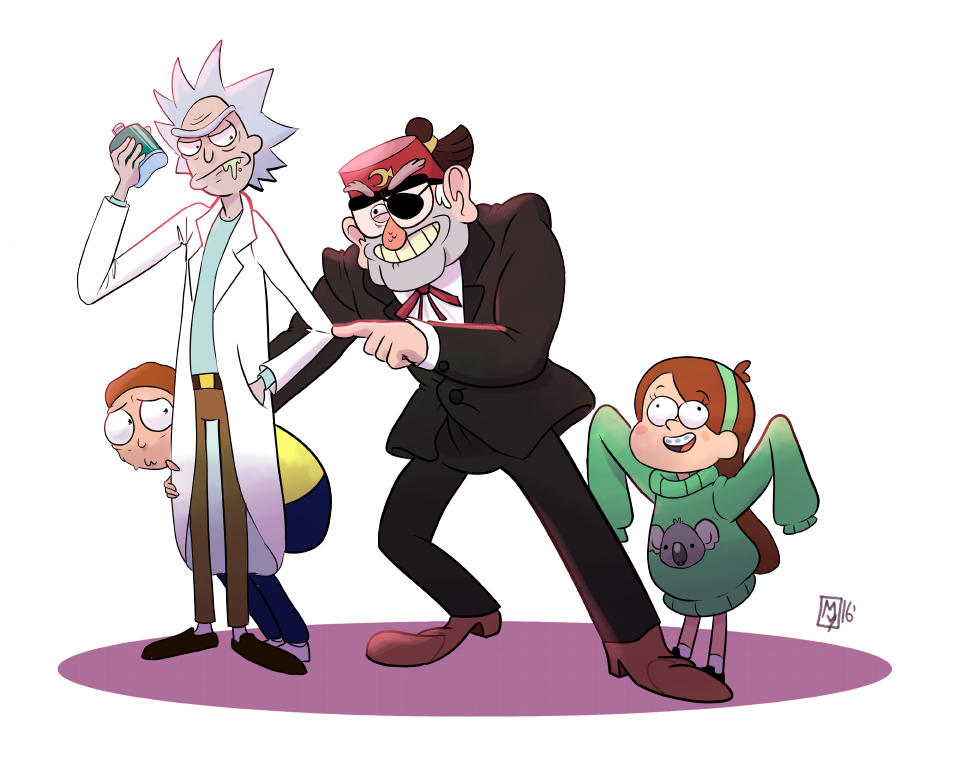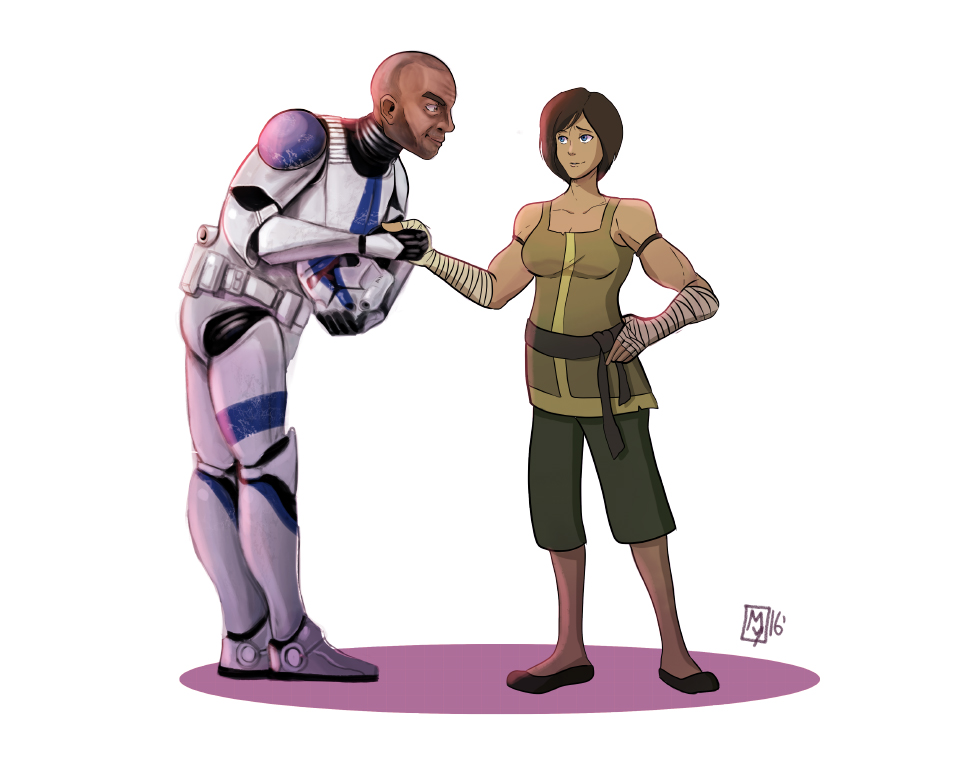The Surprising Maturity of Children's Animation
by Ryan Black | published Mar. 4th, 2016
Cartoons have long been a tool for creators to tell larger than life stories. For years, studios like Disney and Pixar have seen critical and commercial success embracing traditional 2D animation and later CGI, which refers to 3D computer graphics. Both forms have afforded creators opportunities too ambitious or expensive for most live action affairs.It is a form of storytelling that naturally lends itself to creative and high-concept ideas.
Interestingly, several children's shows in recent years have been the leaders in using animation to tell such stories on television. Like their film counterparts, shows like "The Legend of Korra," "Star Wars: The Clone Wars" and "Gravity Falls"work on multiple levels. All three have fun characters, humor and action scenes that resonate with younger audiences, yet they also strive to develop their characters and subtly tackle more adult subject matter.
Despite its fantasy trappings and occasional childish joke, "The Legend of Korra" makes a concentrated effort to make its characters' struggles rooted in believable emotion. When the series' events pick up, Korra, the title protagonist, is understandably headstrong and longs to escape her sheltered life, but over the course of four seasons Korra evolves from a brash teenager to a far more sensible and tempered character genuinely shaped by the events which transpire.
Her own development is compounded by the understandable and shockingly realistic nature of the antagonists she and her allies face. It would be especially easy for a kid's show to have a villain be evil just for the sake of it, but the motivations of each season's antagonist are actually quite conceivable. Season four's "The Calling" episode reflected upon the fact that they all were simply the products of varying political ideologies taken to their absolute extreme. Their respective arcs convey what might actually beappealing about hardline "communism, theocracy, anarchism and fascism" to certain people in the right circumstances.
It all helps make a show with superpowers, fictional creatures and imaginative fantasy settings feel surprisingly rooted in reality. Being a cartoon helps make the marriage of its nuanced storytelling and creative world feel seamless and believable.
Much of the same can be said about "Star Wars: The Clone Wars." While it has the benefit of taking place within one of the most popular and fleshed out universes in all of fiction, it confidently stands on its own merits. It offers a mature look on elements glossed overor not fully exploredin the films, most notably the issues and consequences that stem from war. At several points, the show highlights the increasingly morally gray position of the Republic and the Jedi Order, and even portrays villains like Asajj Ventress, Darth Maul and the Separatists in a sympathetic light from time to time. At the very least, it recognizes that each side in a war has their fair share of ambiguity.
"The Clone Wars" showed that with compelling enough material, animation can be used to explore and elaborate upon several aspects of the series' universe and mythos. Without making serious concessions, it would be unfeasible to create a live action series of the same scale that could similarly do the films justice. It's questionable whether it is accurate to call such shows "children's cartoons" when there is such a concerted effort to make their stories and characters so deep and well thought out — sometimes even more effort than their counterparts in adult animation.
That isn't to say shows like "Archer," "Family Guy" and "Bob's Burgers" are necessarily failing in those regards; they just aren't the crux of any of their appeals. Whether it's whatever new animated sitcom Fox cooks up every fall or genuinely funny shows like "Rick and Morty," the idea that animation for adults has to be a half hour comedy seems to have persisted since "The Simpsons."
You can certainly find a lot of exceptions if you turn toward anime series like "Attack on Titan." Yet, for western animation, there still seems to be the prevailing thought that if it's strictly for adults, it can't be taken too seriously. Even classics that have been rebroadcast for kids ("Looney Tunes," "Tom and Jerry" and "The Flintstones") were made initially for older audiences. Way before they were selling vitamins, "The Flintstones"were marketing Winston Cigarettes.
There is something innately appealing about re-watching such shows with older eyes in order to pick up on jokes or references that now seem obvious, but still fly over kids' heads. It speaks to the quality of the writing when the same series can resonate differently but just as well with both older and younger viewers.
Shows like "Gravity Falls" capture a similar essence and blend it with a more modern sense of continuity and character development. It certainly has more levity than either "Star Wars" or "Korra," but a surprising amount of its humor is tied to its evolving narrative. Every episode is sequential and hints of varying subtlety are placed to foreshadow a series-spanning mystery. WIRED describes it perfectly as a "snowballing conspiracy" not unlike "The X-Files" and "Twin Peaks."
The show's likable and well-acted cast personify the series' outlandish charm, but will on occasion also surprise with a few poignant moments. Ultimately, "Gravity Falls" demonstrates that even comedic animation has the potential to create a story with more complex layers.
It's interesting that very few studios have taken the risk to commission animation for mature audiences with more dramatic or intricate narratives in recent years. There have been some notable exceptions, like aforementioned anime shows like "Attack on Titan" and to a lesser degree the latest two seasons of "South Park." However, they hardly seem to be indicative of a larger trend. Animation seems a natural fit for ideas perhaps too ambitious for all but a few live action productions. Kids' shows like "The Legend of Korra", "Star Wars: The Clone Wars" and "Gravity Falls" have proven not only that, but that cartoons can aptly develop their characters and tackle more sophisticated themes. Ironically, "children's animation" has become the means for creative minds to interweave real substance into cartoons.




